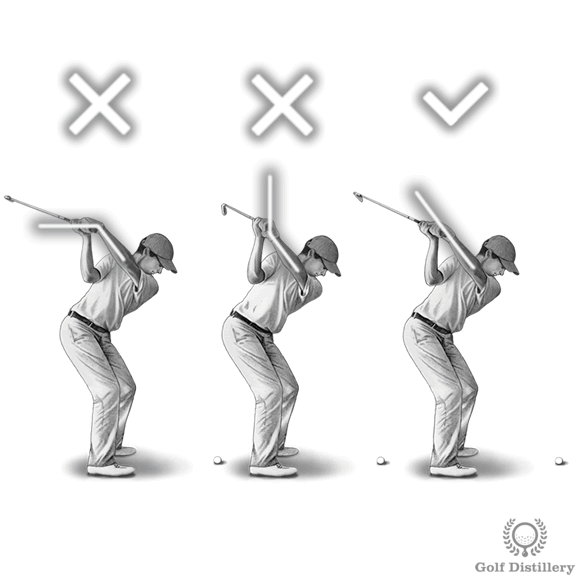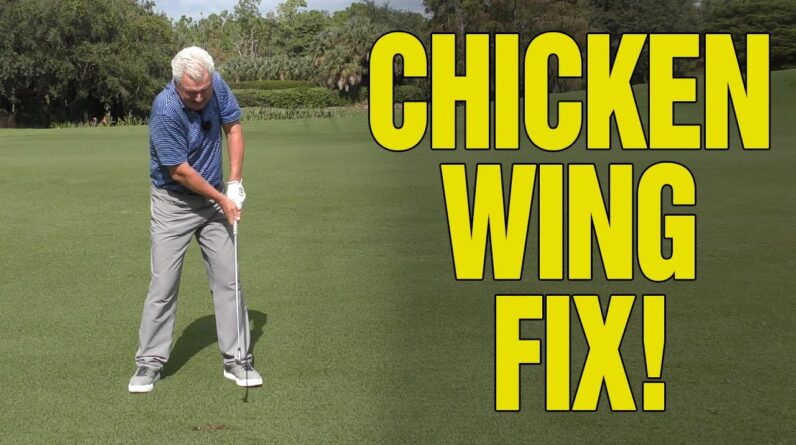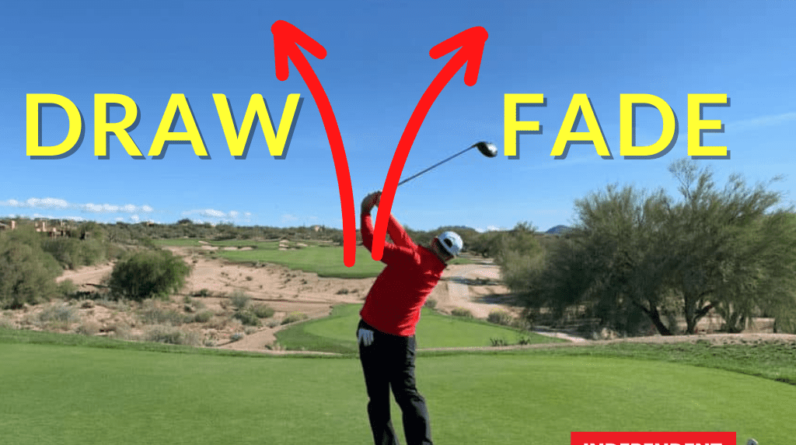Have you ever wondered about the role of wrist hinge in the golf swing? Well, in this article, we will explore the importance of this fundamental aspect of the game. The way your wrists hinge during the swing can greatly impact your accuracy and power, so understanding its role is crucial to improving your golfing skills. Discover how the proper wrist hinge technique can help you achieve a more controlled and powerful swing, ultimately leading to better results on the course. So, let’s dive into the fascinating world of wrist hinge and unlock the secrets to a better golf game.
Understanding the Wrist Hinge
Definition of Wrist Hinge
The wrist hinge refers to the movement of the wrists during the golf swing. It involves the bending of the wrists to create a hinge-like action, allowing for better power transfer and control throughout the swing.
Importance of Wrist Hinge in Golf
The wrist hinge plays a crucial role in the golf swing for several reasons. Firstly, it contributes to increased clubhead speed, allowing for longer shots and greater distance. Secondly, it enhances control and accuracy by providing better clubface control at impact. Additionally, the wrist hinge helps in generating power and maintaining proper timing and rhythm throughout the swing.
Mechanics of Wrist Hinge
In order to understand the benefits of proper wrist hinge, it’s important to grasp the mechanics behind it. During the backswing, the wrists naturally hinge upward, creating an angle between the shaft and the forearm. This angle is maintained until the downswing, where the wrists unhinge and release the stored energy, resulting in a powerful strike.
Benefits of Proper Wrist Hinge
Increased Clubhead Speed
One of the significant advantages of a proper wrist hinge is the increased clubhead speed it can generate. As the wrists hinge upwards during the backswing, they create a wider arc, allowing for a more efficient transfer of energy from the body to the clubhead. This increased speed can lead to longer shots and improved performance on the golf course.
Improved Control and Accuracy
The wrist hinge also plays a crucial role in improving control and accuracy in the golf swing. By properly hinging the wrists, the golfer can maintain better control of the clubface throughout the swing, resulting in more consistent strikes and better direction. This control and accuracy can lead to improved shot placement and lower scores.
Enhanced Distance and Power
Proper wrist hinge can significantly contribute to enhanced distance and power in a golfer’s shots. By allowing for a wider arc and efficient energy transfer, a well-executed wrist hinge can help drive the ball farther down the fairway. The ability to generate power through the wrists can also be beneficial when facing challenging shots that require additional distance.
Better Timing and Rhythm
Another key benefit of proper wrist hinge is the improvement in timing and rhythm. By maintaining a consistent and controlled wrist hinge throughout the swing, golfers can develop a smooth and coordinated tempo. This synchronization between the body and the wrists leads to a more fluid and balanced swing, resulting in improved ball striking and overall performance.
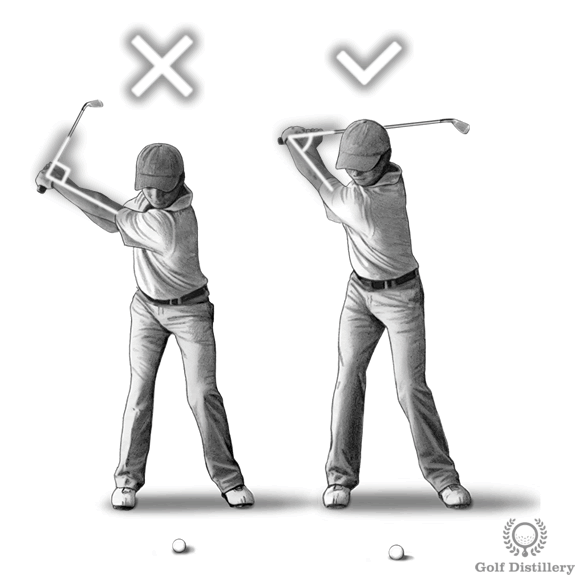
Key Factors Influencing Wrist Hinge
Grip Pressure
The grip pressure is a crucial factor that influences wrist hinge in the golf swing. If you grip the club too tightly, it restricts the natural hinge movement of the wrists. Conversely, a too light grip can lead to inconsistent and weak wrist hinge. Finding the right balance of grip pressure allows for optimal wrist hinge and improved performance.
Alignment
Proper alignment is essential for allowing the wrists to hinge effectively during the swing. If your alignment is off, it can disrupt the natural movement of the wrists and lead to inconsistent strikes. Ensuring proper alignment of the body and club enables a fluid wrist hinge motion, resulting in more efficient and accurate shots.
Body Position
The position of your body throughout the swing also influences the wrist hinge. A stable and balanced body position provides a solid foundation for the wrists to hinge correctly. Poor posture or excessive movement can hinder the natural hinge movement and negatively impact the swing. Maintaining a stable and athletic body position allows for an effective and efficient wrist hinge.
Club Selection
Different clubs require varying degrees of wrist hinge to optimize performance. The length and loft of the club influence the amount of wrist hinge needed for ideal contact with the ball. Understanding the club’s characteristics and selecting the appropriate one for each shot ensures proper wrist hinge and maximizes the club’s potential.
Wrist Hinge Techniques
One-Piece Takeaway
The one-piece takeaway technique involves keeping your wrists firm and maintaining a straight line from your left shoulder to the back of your left wrist, ensuring minimal wrist hinge during the initial stage of the swing. This technique promotes a more controlled and compact swing, reducing the risk of over-hinging or casting.
Early Wrist Set
The early wrist set technique involves initiating the wrist hinge early in the backswing. By consciously hinging the wrists as soon as the club starts moving, you can create a wider swing arc and increase the potential for power transfer. This technique requires proper timing and coordination to ensure a smooth transition from the backswing to the downswing.
Late Wrist Set
Contrary to the early wrist set, the late wrist set technique involves minimal wrist hinge during the backswing, with the majority of the hinge occurring during the transition from the backswing to the downswing. This technique promotes a more controlled swing, allowing for better accuracy and shot placement.
Maintaining a Constant Wrist Angle
Keeping a constant wrist angle throughout the swing is essential for optimal performance. The wrist angle should be maintained through both the backswing and the downswing, ensuring efficient energy transfer and consistent clubhead control. This technique requires attention to detail and practice to develop a stable and repeatable wrist hinge.
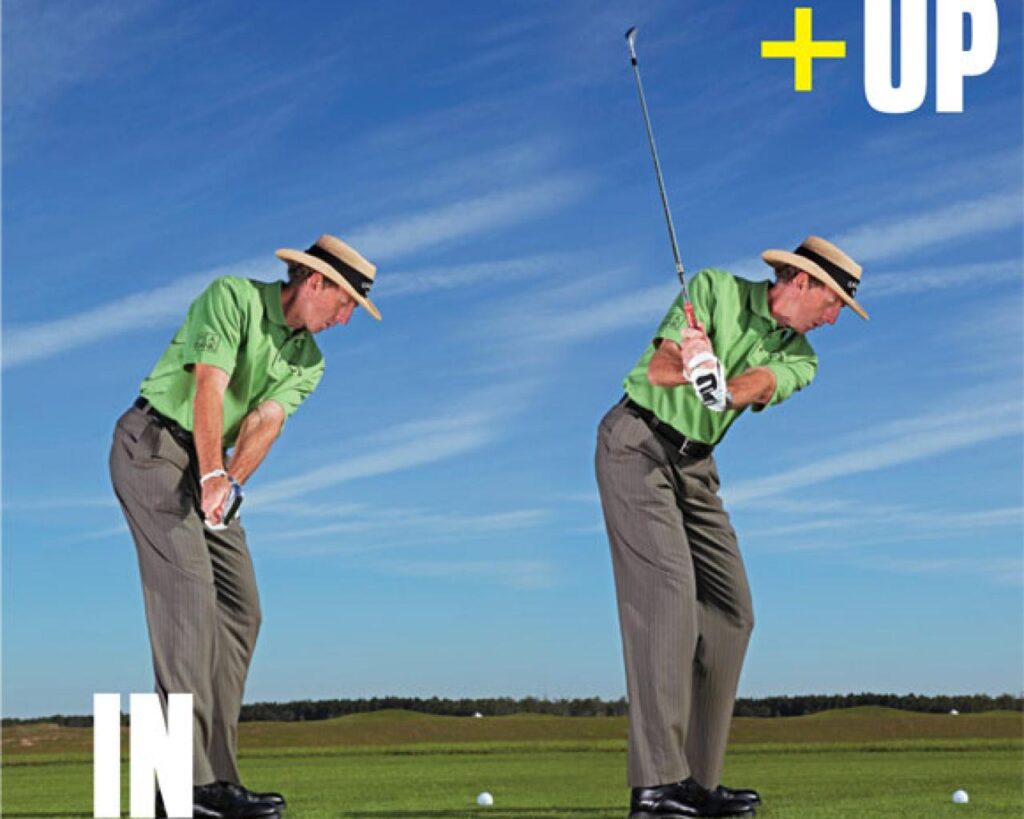
Common Errors and Fixes
Over-hinging the Wrists
Over-hinging the wrists is a common error that can result in inconsistent swing mechanics and compromised ball striking. When the wrists hinge too much during the backswing, it can lead to an overextended position at the top of the swing and a loss of control and power. To fix this, focus on maintaining a smooth and controlled wrist hinge, avoiding excessive movement.
Casting the Club
Casting the club refers to the premature release of the wrists before impact, resulting in a loss of power and accuracy. This error is often caused by an early and abrupt unhinging of the wrists during the downswing. To prevent casting, focus on maintaining lag in the wrists and a delayed release, ensuring a powerful and controlled strike at impact.
Losing Wrist Hinge
Losing wrist hinge can occur when the wrists fail to maintain their angle throughout the swing. This error often leads to inconsistent strikes and a lack of power. To avoid losing wrist hinge, focus on maintaining a firm and stable grip, keeping the wrists in a neutral position, and practicing proper wrist hinge techniques regularly.
Multiple Hinges
Excessive wrist hinge, involving multiple hinges throughout the swing, can greatly affect control and power. This error often leads to inconsistency and a lack of solid contact with the ball. To correct this, focus on maintaining a smooth and continuous hinge motion, avoiding unnecessary additional hinges.
Training Drills for Wrist Hinge
Wrist Cock Drill
The wrist cock drill is a simple yet effective way to improve wrist hinge mechanics. Start by holding a club in your lead hand with the clubhead pointing upward. Practice cocking your lead wrist upward, recreating the hinge motion of the backswing. Repeat this drill to develop a consistent and controlled wrist hinge.
Swing Plane Trainer
Using a swing plane trainer can help develop a proper wrist hinge by providing feedback on your swing path. These training aids simulate the correct swing plane, which promotes a more efficient wrist hinge. By incorporating a swing plane trainer into your practice routine, you can improve wrist hinge mechanics and overall swing consistency.
Impact Bag Training
Impact bag training is an excellent way to enhance wrist hinge and overall swing power. By striking an impact bag while focusing on maintaining a firm wrist angle through impact, you can develop a more powerful and controlled strike. Incorporate impact bag training into your practice sessions to reinforce proper wrist hinge and improve overall swing mechanics.
Alignment Rod Drill
The alignment rod drill is a useful tool for practicing and improving wrist hinge mechanics. Place an alignment rod along the path of your backswing, slightly outside your target line. Focus on maintaining a consistent and controlled wrist hinge motion, avoiding contact with the alignment rod. This drill helps reinforce proper wrist hinge and promotes a more efficient swing.

Importance of Flexibility and Strength
Role of Forearm and Wrist Flexibility
Forearm and wrist flexibility are vital for optimal wrist hinge and overall golf swing mechanics. Improved flexibility allows for a wider range of motion in the wrists, enabling a more efficient hinge. Regular stretching exercises targeting the forearms and wrists can greatly enhance flexibility, which in turn improves the ability to execute proper wrist hinge techniques.
Exercises for Wrist Strength
Wrist strength plays a critical role in maintaining a stable and controlled wrist hinge throughout the swing. Strengthening exercises such as wrist curls, wrist extensions, and grip strengthening exercises can help develop the necessary strength in the wrists. By incorporating these exercises into your fitness routine, you can enhance wrist stability and control during the golf swing.
Stretching for Improved Hinges
In addition to strength exercises, stretching is an important component of developing improved wrist hinges. Stretching exercises targeting the wrists, forearms, and shoulders can help loosen tight muscles and improve flexibility, allowing for a more fluid and controlled wrist hinge. Incorporate stretching into your warm-up routine to prepare your wrists for optimal performance.
Customizing Wrist Hinge for Individual Players
Factors to Consider
Customizing the wrist hinge for individual players involves considering various factors. These factors include a player’s physical attributes, swing style, and personal preferences. The length of the arms, flexibility, and strength in the wrists, as well as the desired swing characteristics, all play a role in determining the optimal wrist hinge for each player.
Working with a Golf Instructor
Working with a golf instructor is highly recommended when customizing wrist hinge for individual players. A qualified instructor can assess the player’s swing mechanics, physical attributes, and swing goals, and provide personalized guidance and feedback. With their expertise, they can help fine-tune the wrist hinge to optimize performance and overall swing mechanics.
Trial and Error
Finding the perfect wrist hinge technique often involves trial and error. It may take time and experimentation to discover the optimal wrist hinge for your swing. Adjustments in grip pressure, alignment, and swing plane may be necessary as you explore different techniques. Embrace the process, gather feedback from professionals, and be open to making adjustments along the way.
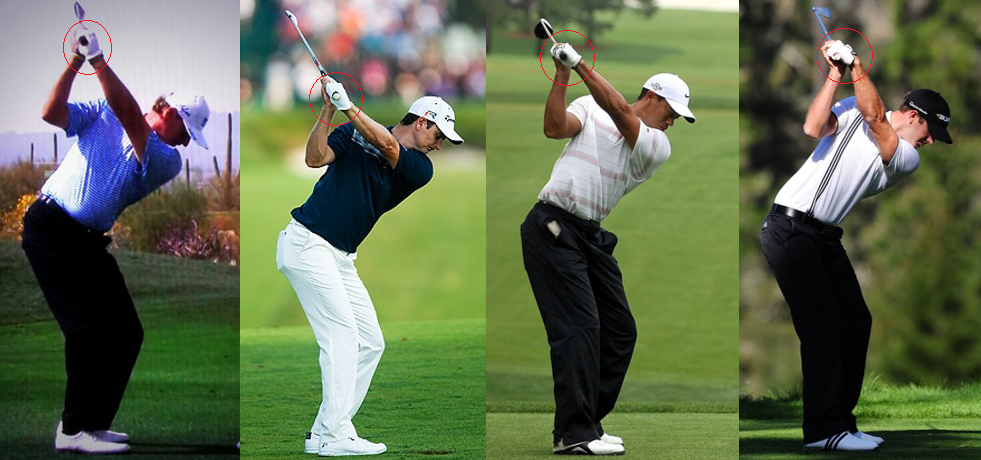
Effect of Wrist Hinge on Swing Path
Inside-Out Swing Path
The wrist hinge significantly influences the swing path, and one effect is the inside-out swing path. When the wrists hinge correctly during the downswing, it promotes a natural inside-out swing path. This swing path is desired as it helps prevent slices, encourages a square clubface at impact, and promotes a powerful and consistent strike.
Outside-In Swing Path
On the other hand, an improper wrist hinge can lead to an outside-in swing path. This occurs when the wrists do not properly hinge during the downswing, resulting in the club swinging from outside the target line to inside the target line. An outside-in swing path often leads to slices, inconsistent strikes, and reduced distance.
Square Swing Path
A proper wrist hinge promotes a square swing path, where the clubhead follows a straighter path towards the target line. This square swing path allows for better accuracy, increased control, and optimal power transfer. By focusing on a well-executed wrist hinge, golfers can achieve a more consistent and reliable square swing path.
Case Studies of Professional Golfers
Notable Players with Strong Wrist Hinges
Several professional golfers are known for their strong wrist hinges, which contribute to their exceptional performance on the golf course. Players like Brooks Koepka, Dustin Johnson, and Adam Scott have developed a powerful and controlled wrist hinge, allowing them to generate exceptional clubhead speed, accuracy, and distance.
Player Analysis and Techniques
Analyzing the techniques of professional golfers with strong wrist hinges can provide valuable insights for players looking to improve their own wrist hinge mechanics. Studying their swing videos, observing their hand and wrist position throughout the swing, and understanding how they maintain control and power can help golfers identify areas for improvement and integrate effective techniques into their game.
In conclusion, the wrist hinge plays a crucial role in the golf swing. Understanding its definition, importance, mechanics, and the benefits it offers is essential for any golfer looking to improve their performance on the course. Exploring the key factors influencing wrist hinge, the techniques to implement, common errors to avoid, and training drills to enhance wrist hinge can aid in developing a more efficient and effective golf swing. Additionally, considering the importance of flexibility and strength, customizing wrist hinge techniques for individual players, and understanding its impact on the swing path and studying professional golfers’ techniques can further contribute to mastering the wrist hinge and optimizing overall golfing abilities. With proper knowledge, practice, and guidance, every golfer can unlock the potential of their wrist hinge and experience improved control, distance, and accuracy in their game.
